Pansy egg surprise
Reading vertically, those in the first column are:
Grand Duke George, the Tsar's younger brother and at this time heir apparent to the Imperial throne Grand Duke Alexander, the Tsar's brother-in-law via his sister, Grand Duchess Xenia
In the second column are
the Tsar himself Grand Duchess Irina, subsequently Princess Youssoupoff, the Tsar's only niece, daughter of Grand Duke Alexander and Grand Duchess Xenia
In the third column are:
Grand Duchess Olga Nikolaevna, the first child of the Tsar and Tsarina Grand Duchess Tatiana, their second child Grand Duke Michael, youngest brother of the Tsar
In the fourth column are
The Tsarina, Empress Alexandra Feodorovna Grand Duke Andrew, the Tsar's nephew, brother of Grand Duchess Irina
In the fifth column are:
Grand Duchesses Olga Alexandrovna, sister of the Tsar Grand Duchess Xenia, the other sister of the Tsar.
Each person's mongram is located on his/ her corresponding oval in Cyrillic letters.
The panel is surrounded by diamonds and is surmounted by a Romanov crown, also in diamonds.Dieses Werk ist kein gemeinfreies Werk. Wenn Sie dieses Werk außerhalb von Wikimediaprojekten verwenden, geben Sie bitte die folgenden Informationen an:
Credit line example: "Pansy egg surprise.svg from Wikimedia Commons von K. D. Schroeder, CC-BY-SA 4.0" |
Relevante Bilder


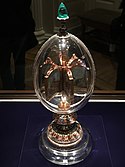



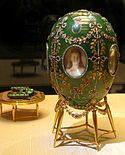













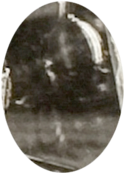

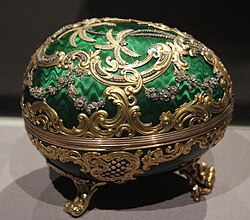





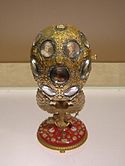
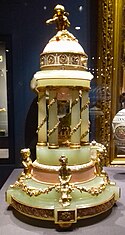
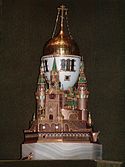
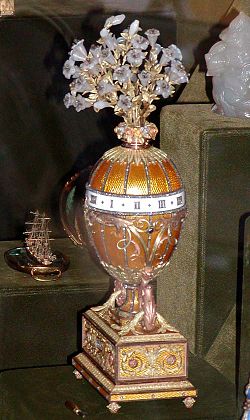
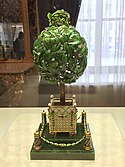




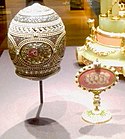



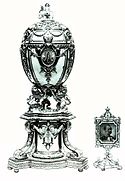
Relevante Artikel
Fabergé-EiAls Fabergé-Eier werden Schmuckgegenstände in Form von Ostereiern bezeichnet, die zwischen 1885 und 1917 in der Werkstatt von Peter Carl Fabergé in Sankt Petersburg angefertigt wurden. Dabei wird unterschieden zwischen Prunkeiern, die im Auftrag des Zaren hergestellt wurden (kaiserliche), und solchen als Auftragsarbeiten von Personen, die es dem Zaren gleichtun wollten – wie Alexander Kelch, Beatrice Ephrussi, der Duchess of Marlborough, dem Ölmagnaten Emanuel Nobel oder Prinz Felix Sumarokow-Elston. Damals wie heute sind die Fabergé-Eier ein Inbegriff höchster Goldschmiedekunst und ein Symbol für Luxus. .. weiterlesen
